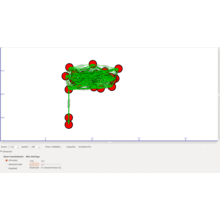How to write review paper?
A review paper reflects the knowledge about writer and also helps other professionals, students and researchers to understand about your research clearly. A review paper is not just about summarizing the collected information. It requires providing of reasonable insights which is possible only with deep understanding of the research by discovering more important findings and pattern noticing.
Your paper should also help other researchers to explore more about the topic and further work on it. When other researchers read your paper, they can also do some contribution to the field by collecting new ideas, learning new perspective and by identifying the gaps.
Here, this blog will guide you in writing a better review paper. You should follow steps like selecting topic, performing literature review, doing proper analysis and also organizing the collected information. This will also discuss about following guidelines of the journal, about the writing techniques and also understanding about the readers.
Type of review papers
The review papers have been grouped into three main categories:
- Narrative Review: After looking on to the other researches which has published related to your topic, the narrative review notify about your knowledge on the topic.
- Systematic Review: This will provide answer for a question by clearly looking on to the available scientific researches related to the topic.
- Meta-Analysis: It is basically done to check your work. It combines and compares the outcomes from the studied which are published previously.
Structure of a Review Paper
To make sure about coherence and clarity the review paper structure follows a format which is more defined. In below section you are provided with a guide to make a review paper:
- Abstract (summary of the whole article)
Introduction – Start writing your abstract with a clear introduction. Mention about the purpose of your review paper. State clearly about the gap you noticed in existing literature in which you are going to do research on and about the importance of topic.
- Mention about the Objectives and Scopes: Underline the important objective or the problem you are going to address. Describe about the scope of your research and also about the topic range.
- Methodology outline: The methodology includes details such as basics of excluding or including studies, information about old literatures also about methods involved for analysis. It gives a methodology overview which is used in review paper.
- Key Insights and Findings: Summarize about the patterns or trends observed, key themes which you found in literature review. The main insights and findings you got from your research should be highlighted.
- Focus on Contribution and Novelty: Emphasize your novel contribution or insights, new perspective that you are going to do for the field. Explain about how you can add more knowledge on the existing topic.
- Clear and concise language: Keep an eye on the language you use. Avoid using technical or jargon terms in which the readers find difficulty. Describe only about required information.
- Recommendations and Implications: When concluding your implications found from research should be summarized. If you can recommend any suggestions for future to contribute to the field then make it possible.
- Introduction (Why the author did the research)
Hook statement – When you start writing your introduction part, start with a provoking or a hook statement which can attract a reader. It can be surprising static, an anecdote based on your topic or a quote.
- Background information: Describe about the background of your topic briefly. Tell about your topic in a broader way related to the importance, recent trends and the content of topic, which makes your paper more relevant and timely.
- Research gap or Problem: Address about the research gap or the problem you noticed. Identify and state about the key questions or issues from old literature which your research is going to talk about.
- Objectives and Purpose: Highlight the goals or objectives in your paper like finding trends, new perspective, importance of old research. Mention the purpose of your research. What are you going to do in your research?
- Scope of your review: Set boundaries for review; explain about the limitations and also the literature types. It makes the readers to understand your work clearly.
- Key terms and concepts: Give the readers required background information. Provide them with definition and explanation.
- Explain about your review relevance: establish the importance of your work compared with the already existing literature.
- Review of methodology (how the author did the research)
Start with the approach you used to carry out literature review.
- Explain about the objectives and need of your review which guided your methodology.
- Explain about the strategy you used to find literature related to your topic.
- Give instructions about how to exclude or select a study. Highlight the criteria and publications which are required for review.
- Mention about the methods or tools you used for extracting data.
- Briefly explain how you organized the collected information.
- Describe how you found the relevant literature.
- Discuss about your contribution to the organization and explaining literature using those framework.
- Mention about the strategies you used to adjust the criteria for selection.
- Existing research gaps (what’s missing)
- Start with doing review on old literature from your related topic.
- While reviewing the literature, find the similarities between trends, patterns and themes among studies.
- Make note of methodologies used in the study from which you are doing review.
- Highlight those results or findings which are contradictory or creating conflict.
- New technologies and trends may over shade existing research work.
- Make sure whether the existing research can be applied in real world or fit for implementing it practically.
- Make sure to note down the topics which require more investigation.
- Raise a question for the emerging research which may address a serious problem by keeping in mind about the future development.
- Check whether the gaps identified by you are new and genuine which is not been repeated from old literature.
- List the gaps and observations you identified in an objective way.
- Future scope (what are the possible applications of this work)
You should outline about the potential areas which is required for improvement in future research based on the gaps in old literature, in this section. To enhance the future studies in this field, state some of the areas in which research can be done such as new methodologies, interdisciplinary approaches or emerging technologies.
- Conclusion (what the author learned)
At the end every result based on the topic are combined to produce a conclusion for the review paper. By understanding the topic in a deeper way, you can contribute more to it in future.
- Acknowledgements (give credit where credit is due)
Convey thanks to every institutions or individuals who have provided their contribution to your research process in this acknowledgement section. Express your gratitude towards everyone who gave you guidance, support, essential resources to help you with your review.
- References (whose research the author read)
Add a list of every source which you used for your research purpose during review of literature such as books, articles and academic papers.
Use any one citation style to write title, author name, source details and publication year for all reference. Make sure to alphabetically arrange the used references. Finally do an accuracy check.

 Click Here to watch our latest output video using NS3 simulator
Click Here to watch our latest output video using NS3 simulator  Click Here to watch our latest projects screenshots using NS3 simulator
Click Here to watch our latest projects screenshots using NS3 simulator